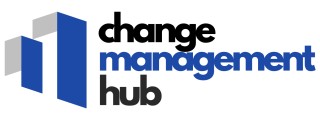
Understanding Change Management in Supply Chains
Recognizing the Basics of Managing Change in Supply Chains
Change management in supply chains involves a structured approach to transitioning organizations to a desired future state, particularly when implementing new technologies or processes. It aims to optimize supply chain processes such as procurement, planning, and inventory management. By effectively managing change, businesses can enhance their chain performance, reduce costs, and ensure customer satisfaction.
Supply chains are complex networks that connect suppliers, manufacturers, logistics partners, and customers. It’s crucial for any adjustment, whether it be in demand planning or order management, to be strategically implemented to avoid disruptions. Elements like data accuracy, real-time tracking, and the integration of machine learning or artificial intelligence, play a pivotal role in building a resilient supply chain management strategy.
- Process Optimization: Change management focuses on efficient use of technology solutions to streamline operations and accelerate time to market.
- Stakeholder Engagement: Effective communication and collaboration among all stakeholders are key to successfully implementing changes.
- Performance Metrics: Rigorous evaluation of supply chain performance helps in better decision making and in aligning change initiatives with business objectives.
For deeper insights into the change management aspect of supply chains and how talent mapping can impact this, consider reading about unveiling the impact of talent mapping.
The Role of Software Demos in Change Management
The Strategic Role of Software Demonstrations
In the dynamic realm of supply chain management, witnessing a software demo is not merely about observing the capabilities of a program. It plays a strategic role in shaping how organizations approach change. Software demonstrations offer a tangible vision of SCM optimization by shedding light on data-driven decision-making processes that are essential for seamless operations. A well-structured demo serves as an effective tool for change management by translating abstract concepts into practical applications. It provides stakeholders a concrete look into how the solution can better manage inventory levels, streamline procurement requests, and ultimately, enhance overall chain performance.Boosting Adoption through Practical Engagement
Understanding how a new SCM software operates in real-time can significantly reduce resistance to change. The hands-on nature of demos helps employees visualize alterations to routine tasks such as demand planning or logistics. As these participants observe the integration of artificial intelligence and machine learning into everyday chain management, they gain full comprehension of the benefits, like optimizing demand supply and enhancing inventory management. Such firsthand exposure also reassures stakeholders by demonstrating how the software can help reduce costs and ensure customer satisfaction through improved manufacturing and order processes. Experiencing the interface firsthand, suppliers and planners can better appreciate how this tool accelerates time to market and synchronizes sales efforts with actual demand data. For organizations in fields like healthcare, where procurement and logistics are critical, experiencing these efficiencies in a demo allows for informed decision making. By contextualizing the solution's features within the organization's unique environment, a management demo aligns with broader business strategies. To dive deeper into the benefits of utilizing software demos for effective change management in supply chains, explore more insights in this article.Key Features to Look for in a Supply Chain Management Software Demo
Essential Attributes of a Supply Chain Management Software Demo
When considering a supply chain management software demo, it’s crucial to focus on key features that can significantly impact your business operations. These features not only facilitate effective change management but also enhance the overall efficiency of your supply chain.
- Real-Time Data Access: A robust SCM software should provide real-time data access, enabling businesses to make informed decisions quickly. This is particularly important for managing demand supply fluctuations and optimizing inventory levels.
- Advanced Analytics: Look for solutions that incorporate machine learning and artificial intelligence. These technologies can enhance decision-making processes by providing predictive insights and optimizing chain performance.
- Integration Capabilities: The software should seamlessly integrate with existing systems, such as procurement and inventory management tools, to ensure a smooth transition and reduce costs associated with implementation.
- Customizable Dashboards: Customizable dashboards allow businesses to tailor the software to their specific needs, providing a comprehensive view of supply chain operations and accelerating time to market.
- Supplier and Order Management: Effective supplier and order management features are essential for maintaining efficient logistics and ensuring customer satisfaction. These features help streamline processes and improve overall supply chain efficiency.
By focusing on these key features during a management demo, businesses can gain full insight into how the software can enhance their supply chain operations. This understanding is crucial for overcoming resistance to change and successfully implementing new technologies into practice.
Overcoming Resistance to Change with Software Demos
Utilizing Software Demos to Overcome Change Resistance
In the context of supply chain management, resistance to change is a significant obstacle that can impede progress. Integrating a software demo as a tool for change management is an influential approach to overcoming such resistance. Given that change can be daunting for teams navigating demand fluctuations, procurement adjustments, or inventory management modifications, a demo provides a tangible exploration of a new solution's impact, helping to reduce apprehension. One of the core benefits of incorporating a software demo in the change process is its ability to demonstrate real-time data analytics. Real-time data offers stakeholders the opportunity to see firsthand how machine learning and artificial intelligence can streamline decision-making processes, optimize inventory levels, and improve overall supply chain performance. By showcasing these features, the demo helps in persuading team members about the advantages of adopting the new system. Moreover, engaging with a demo instills confidence among employees by allowing them to experience potential productivity enhancements and reductions in operational costs. For example, procurement departments might witness firsthand how streamlined order tracking can accelerate time to market and ensure customer demands are met efficiently. Such practical demonstrations can be particularly persuasive, transforming skepticism into support. Software demos also play a crucial role in familiarizing employees with the interface and functionalities before full implementation. By engaging with the software in advance, teams can adjust their workflows, enhancing preparedness and easing the transition. This proactive engagement reduces the risk of disruptions typically associated with major supply chain shifts. Lastly, inviting key stakeholders to request a demo and channeling their feedback allows businesses to tailor the solution to specific needs. This collaborative approach not only fosters a sense of ownership but also aids in aligning the software with the company's strategic objectives, be it in healthcare logistics, sales forecasting, or manufacturing efficiency. In conclusion, when suppliers and chain management leaders seek to introduce new technologies, a thoughtfully executed software demo can be an instrumental part of the change management strategy, transforming reluctance into readiness.Evaluating the Success of a Software Demo
Assessing the Impact of Software Demos on Change Initiatives
Evaluating the effectiveness of a supply chain management software demo is crucial to understanding its role in facilitating change within an organization. It’s important to analyze how well the demo supports the objectives of your change management strategy.- Data-Driven Insights: One of the primary metrics for success is the quality of insights generated from the demo. Evaluate whether the demo’s analytics capabilities – such as machine learning and artificial intelligence – provide actionable data for decision making. These tools should help optimize procurement, inventory levels, and order management, ultimately contributing to improved supply chain performance.
- Real-Time Functionality: Assess if the demo showcases real-time features that enhance responsiveness and efficiency in managing demand and logistics. In a rapidly changing market environment, the ability to adapt quickly is essential, whether in manufacturing, healthcare, or any other sector.
- Cost Reduction Potential: A significant measure of success is the demonstration of the software’s potential to reduce costs, whether through improved inventory management, better supplier coordination, or streamlined sales and planning processes.
- User Engagement and Feedback: Gather feedback from employees who interacted with the demo. Understanding their experiences and the ease of integrating the solution into daily operations can offer valuable insights into potential resistance and acceptance.
- Enhanced Decision Making: Evaluate how the demo supports strategic decision making, particularly in aligning demand supply chains with business goals. Does it help accelerate time to market and ensure customer satisfaction?
Implementing Insights from Software Demos into Practice
Applying Software Demo Insights to Real-World Operations
Once you've explored the software demo, potentially detecting ways to enhance your supply chain processes, the next crucial step is applying these insights to real-world operations effectively. Whether you are a part of procurement or inventory management, leveraging the solution found in the demo can significantly optimize supply chain performance.
Begin by integrating the insights gained from the demo into your company's decision-making framework. Utilize the data-driven intelligence presented to adjust your order and planning procedures. This could also involve adapting machine learning and artificial intelligence capabilities observed during the demo to forecast demand supply more accurately.
Additionally, consider applying the demo's findings to streamline your supplier relationships. This may involve collaboratively working with suppliers to ensure customer needs are met promptly, eventually accelerating time to market for your products.
To ensure a seamless transition from demo insights to practice, remain aware of potential resistance to change within your team. Emphasizing the specific benefits, like reduced costs or improved inventory levels, can aid in overcoming such workplace challenges effectively.
Furthermore, it's vital to continuously monitor the implementation process and adjust strategies as required. Pay close attention to logistics and supply chain management metrics to evaluate performance enhancements seen post-implementation.
In conclusion, draw on the demo’s insights to foster a culture of continuous improvement within your business operations, thereby aligning your supply chain strategy with evolving market demands.













